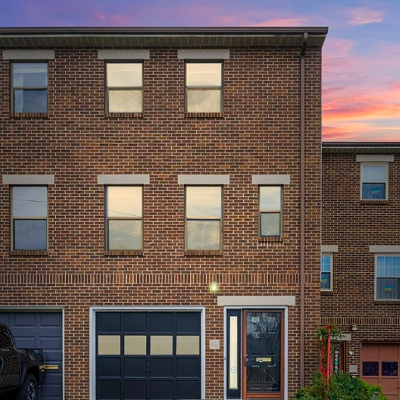Actually, it's only been about a year since that home, a massive Tudor mansion, caught fire. And by the standards of creepy haunted house-looking mansions, that's nothing. For proof, you need only look across the street, at the Gwinner-Harter house. The place looks great now, but a fire damaged its roof in 1986, and for years its Dickensian chimneys and brooding exterior looked far creepier than the McCook home does now.
The home you refer to was built in 1907 for one Willis McCook, who is best known for being the attorney representing Henry Clay Frick. Sadly, however, his house didn't catch fire until much later. But in its heyday, it was, as architectural historian Walter Kidney has written, a "typical Rich Man's House" featuring elaborate architecture and its own private chapel ... I guess the McCooks didn't want to spoil their prayers by actually meeting any of those meek, poor people Jesus kept going on about.
As is often the case with mansions, however, the place became prohibitively expensive to maintain, especially after McCook died. County records show that it was seized for overdue back taxes in the 1940s, and sold at a sheriff's sale for $28,000. By that time, according to an August 2004 article by Post-Gazette architecture goddess Patricia Lowry, portions of the structure had been converted to apartments. In the 1960s, it was popular housing for artsy Carnegie Mellon students provided by landlords Emil and Margaret Bonavita, who bought the property in 1949. According to Lowry, among its tenants were Albert Brooks, Shirley Jones and George Peppard.
A fire broke out on the building's third floor on the night of Feb. 18, 2004 -- just two months after Margaret Bonavita passed away. (Insert haunted-house organ music here.) Fire officials blamed a student's surge protector ... though perhaps that's because a surge protector would be the perfect way for a fire in CMU housing to start. All 15 residents escaped without injury. ("By the time I realized we couldn't put the fire out with extinguishers, I kind of realized that it was imperative to get everybody out of the house," one resident told the Post-Gazette. CMU parents, rest easy: Your tuition money was well spent.)
But the building, along with an accompanying smaller home behind it, has been on the market since last winter.
The Howard Hanna property listing describes the property as being a "magnificent baronial mansion" that is "ready for investors with vision." By "vision," it's safe to say, the real-estate agent means "lots of money": The list price of the home is $1.4 million, and that's not including the fire damage. According to the agent selling the home, Peg Lampenfield, estimates for renovation have ranged between $600,000 and $2 million.
But the potential is just as hard to estimate. "It has a grand hallway with a log-burning fireplace, 8-foot stained-glass windows, carved wood fixtures. It has a billiard room and a gentleman's parlor. I've never actually counted the rooms. Let's see, the second floor has eight bedrooms, a sitting room, four bathrooms and a linen room. So 30 for the whole house is probably a fair estimate."
To me, this is a dream home: One large enough where you can hide from your relatives, offer up burnt sacrifices in the fireplace and atone for your sins in your very own chapel. If that's not what family values are all about, I don't know what is. But surprisingly, mansions like this are often not easy to sell. According to Al Tannler, of the Pittsburgh History & Landmarks Foundation, to sell a mansion this size you need a "crazy person" who "falls in love with the house and has money to burn" -- so to speak. In the case of the Gwinner-Harter home across the street, that owner was Joedda Sampson -- and the building was nearly torn down before she bought it.
But Lampenfield says she expects to close a deal on the McCook house sometime in the next few months. "The fact that it's so high-profile has been attracting a lot of interest," she says. Some people want to convert it into apartments or condos, but a few actually want to convert it back to a single-family dwelling. "Three people have offers on it," she says. So if you're interested, "Get your offer in now."










